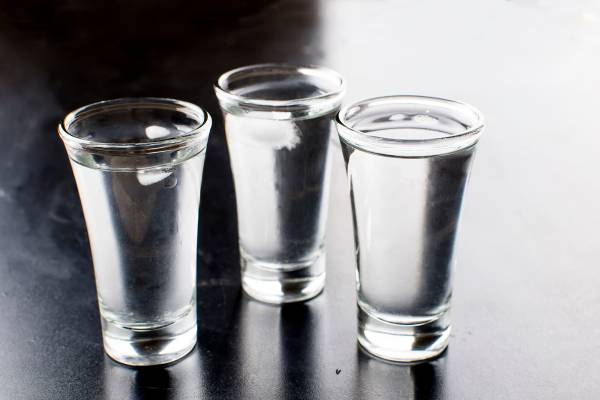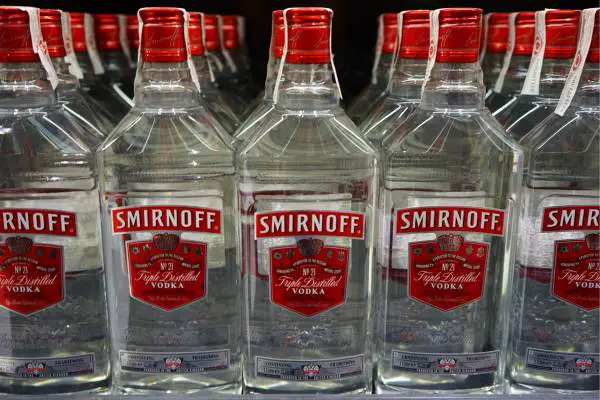In the world of alcoholic beverages, the term “proof” is a commonly used measurement to determine the alcohol content of a particular drink.
The term originated from an old method of assessing the strength of an alcoholic beverage by soaking gunpowder in it and trying to ignite it. If the gunpowder would ignite, the alcohol was considered “proof”.
When it comes to vodka, one of the most popular spirits, many people often wonder: what percentage of alcohol is 60 proof vodka?
60 proof vodka contains 30% alcohol by volume (ABV). This percentage can vary slightly depending on the specific brand or type of vodka, but as a general rule, 60 proof vodka contains roughly 30% alcohol.
Now that we’ve answered the main question, let’s dive deeper into the world of vodka and proof measurements, exploring topics such as the history of proof, how it’s calculated, and the different classifications of vodka based on their alcohol content.
History of Proof
The term “proof” dates back to the 16th century in England, where spirits were taxed based on their alcohol content. The higher the alcohol content, the higher the taxes. To determine the alcohol content, the gunpowder test was used, as mentioned earlier.

In the 18th century, a more scientific method was introduced using a hydrometer, an instrument that measures the density of a liquid.
This new method allowed for a more accurate measurement of the alcohol content in spirits. The term “proof” continued to be used and became synonymous with the alcohol content of a beverage.
Proof vs. Alcohol by Volume (ABV)
While proof is a widely recognized term for indicating the strength of an alcoholic beverage, there is another more internationally recognized standard: Alcohol by Volume (ABV). ABV is a measurement of the alcohol content in a beverage, expressed as a percentage of the total volume of liquid.
The relationship between proof and ABV is simple: 1% ABV is equal to 2 proof. Therefore, to convert proof to ABV, simply divide the proof by 2. For example, a 60 proof vodka would be 30% ABV (60 ÷ 2 = 30).
Types of Vodka Based on Alcohol Content
Vodka is a versatile spirit that can be found in various strengths, ranging from lower-proof flavored vodkas to high-proof options meant for sipping or mixing in cocktails.
Here are some common classifications of vodka based on their alcohol content:
Low-Proof Vodka
Low-proof vodka typically ranges from 30 to 70 proof (15-35% ABV). These vodkas often have added flavors or are infused with fruits, herbs, or spices. They are great for mixing in cocktails or enjoying over ice as a low-alcohol alternative.
Standard Vodka
The most common vodka found on store shelves is 80 proof (40% ABV). This is considered the standard alcohol content for vodka and is the most versatile for mixing in cocktails or sipping straight.
High-Proof Vodka
High-proof vodka ranges from 90 to 190 proof (45-95% ABV). These vodkas are often used for making infused spirits or as a base for liqueurs. Due to their high alcohol content, they are best enjoyed in small quantities and mixed with other ingredients to create flavorful cocktails.

Popular Vodka Brands and Their Alcohol Content
Different vodka brands offer varying levels of alcohol content. Here are a few popular brands and their respective proof and ABV:
- Smirnoff: 80 proof, 40% ABV
- Absolut: 80 proof, 40% ABV
- Grey Goose: 80 proof, 40% ABV
- Stolichnaya: 80-100 proof, 40-50% ABV
- Belvedere: 80 proof, 40% ABV
- Svedka: 80 proof, 40% ABV
- Tito’s: 80 proof, 40% ABV
How to Enjoy Vodka Responsibly
As with any alcoholic beverage, it’s important to enjoy vodka responsibly. Here are a few tips to keep in mind:
– Know your limits: Be aware of your personal alcohol tolerance and consume accordingly.
– Stay hydrated: Drink water alongside your vodka to stay hydrated and reduce the risk of a hangover.
– Eat before drinking: Consuming food before drinking can help slow the absorption of alcohol in your system.
– Don’t mix with other alcohol: Mixing different types of alcohol can increase the risk of overconsumption and a hangover.
Conclusion
In conclusion, 60 proof vodka contains 30% alcohol by volume (ABV). The term “proof” has an interesting history and is still used today as a way to measure the alcohol content of spirits, although ABV is more commonly used internationally. Vodka comes in a variety of strengths, making it a versatile spirit for any occasion.
To wrap up, here are 10 quick facts about vodka and proof measurements:
1. 60 proof vodka contains 30% alcohol by volume (ABV).
2. The term “proof” originated from an old method of testing the strength of alcohol using gunpowder.
3. Proof is related to ABV, with 1% ABV equal to 2 proof.
4. Vodka can range from low-proof (30-70 proof) to high-proof (90-190 proof).
5. Low-proof vodka is often flavored or infused with fruits, herbs, or spices.
6. The standard vodka found on store shelves is 80 proof (40% ABV).
7. High-proof vodka is used for making infused spirits or as a base for liqueurs.
8. Popular vodka brands like Smirnoff, Absolut, and Grey Goose are typically 80 proof (40% ABV).
9. Enjoying vodka responsibly includes knowing your limits, staying hydrated, eating before drinking, and not mixing with other types of alcohol.
10. The relationship between proof and ABV allows for easy conversion between the two measurements.
FAQs
What is 60% alcohol in proof?
To convert alcohol content from percentage to proof, you simply multiply the percentage by 2. Thus, if a beverage is 60% alcohol, it would be 120 proof.
What proof is 63% alcohol?
The proof of an alcoholic beverage is a measure of its alcohol content, and it is double the percentage of alcohol by volume (ABV). Therefore, if a beverage is 63% alcohol, its proof would be 126.
What is the proof of 60% alcohol?
The proof of an alcoholic beverage is a measurement of its alcohol content and is typically double the percentage of alcohol by volume (ABV). Therefore, a 60% alcohol beverage would have a proof of 120.
What proof is 61% alcohol?
To determine the proof of an alcoholic beverage, you simply need to double its alcohol by volume (ABV) percentage. Therefore, if a beverage has an ABV of 61%, its proof would be 122.
What is 80% proof vodka?
80% proof vodka refers to the alcohol content of the beverage. In the United States, alcohol content is measured in terms of Alcohol by Volume (ABV), while in the UK and some other countries, it is measured in terms of Alcohol Proof.
In the US, 80% proof vodka would be equivalent to 40% ABV. This means that the vodka contains 40% pure alcohol by volume, while the remaining 60% consists of water and other impurities.
It is important to note that 80% proof vodka is significantly stronger than the typical vodka available in most markets, which is usually around 40% ABV or 80 proof. Higher proof vodkas, such as 80% proof, are less common and often used in industrial or commercial applications rather than for consumption as a beverage.
What vodka is 60 percent?
Vodka is typically distilled to a high proof, or alcohol by volume (ABV), and then diluted with water to achieve the desired strength. In general, most commercially available vodkas are bottled at 40 percent ABV, which is the standard for vodka in many countries. However, there are some brands that offer vodkas with higher ABV percentages, such as 50 percent or even 60 percent.
It is important to note that the availability of specific vodka brands with a 60 percent ABV may vary depending on your location and local regulations. Some craft or artisanal vodka producers may offer higher ABV options as well. To find a vodka with a 60 percent ABV, you may need to explore specialty liquor stores, online retailers, or contact local distilleries to inquire about their product offerings.
When consuming high ABV spirits like a 60 percent vodka, it is crucial to do so responsibly and in moderation, as the higher alcohol content can significantly impact the strength of the drink and its effects on the body.




